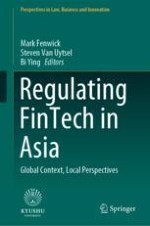Abstract
A regulatory sandbox is a safe space in which businesses can test innovative products, services, business models and delivery mechanisms without immediately incurring all the normal regulatory consequences of engaging in the activity in question. The fundamental purpose of the regulatory sandbox is to facilitate the development of fintech, especially the ‘disruptive innovation’ activities of the start-up enterprises. In this sense, the regulatory sandbox is a sub-category of the regulation of fintech. Fintech is technology-enabled financial innovation, synonymous with the term ‘internet finance’ in the Chinese context. A different but related term, the regulatory technology (regtech), in a broad sense refers to a combination of the ‘compliance technology’ by the market players with the ‘regulatory technology’ by the regulators. In nature, the regulatory sandbox is conditional, limited, and controlled deregulation. It was primarily a reaction to the somehow overly burdensome regulatory requirements after the Global Financial Crisis (GFC), thus leaving a ‘lifeline’ for financial innovation and, in particular, fintech. The situation is very different in China, where the major problem for internet finance it not over-regulation but under-regulation. With a vast territory, diversified areas, and numerous institutions, China does not feature a much developed and high concentrated financial market like that of the UK, Singapore, or the HK SAR. Nor does it have an integrated financial regulatory system. And, most importantly, the existing mechanisms in China are capable of performing equivalent or even more functions than the sandbox, which, if copied in China, would be redundant. In short, the regulatory sandbox is admittedly a remarkable innovation in terms of regulatory ideas and approaches conducive to financial innovation, especially fintech. However, with its specific background, exterior conditions, and intrinsic limitations, it is by no means an inevitable choice or universal model for the regulation of fintech. Based on the actual circumstances, it’s not desirable for China to introduce the sandbox, at least for the time being.
